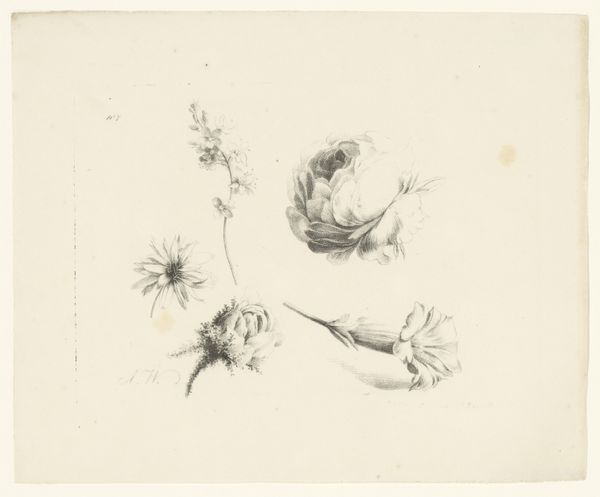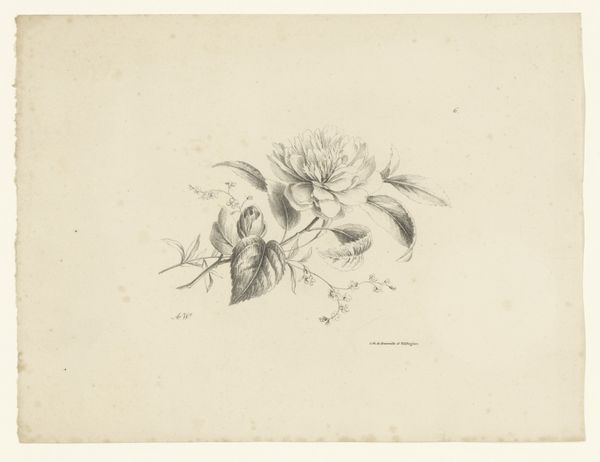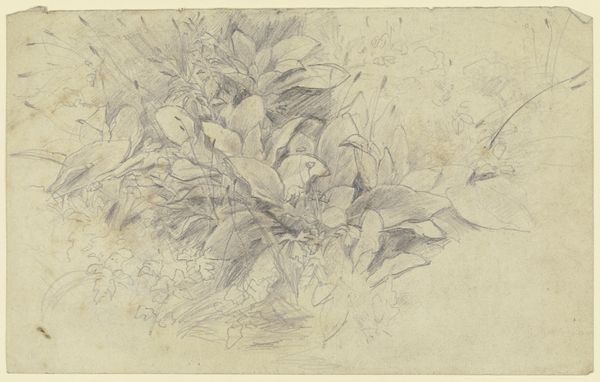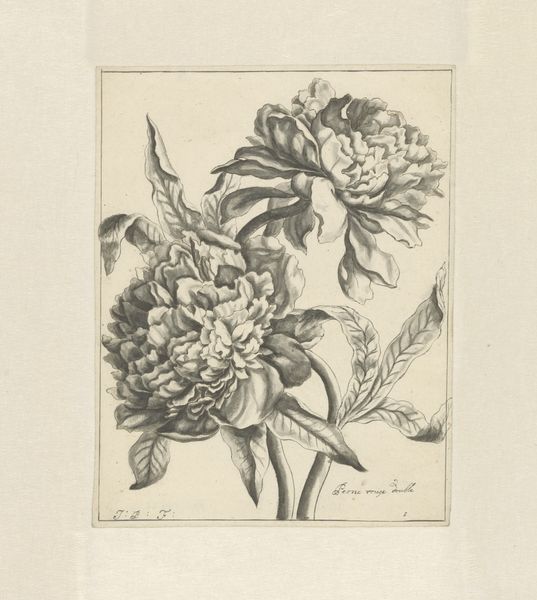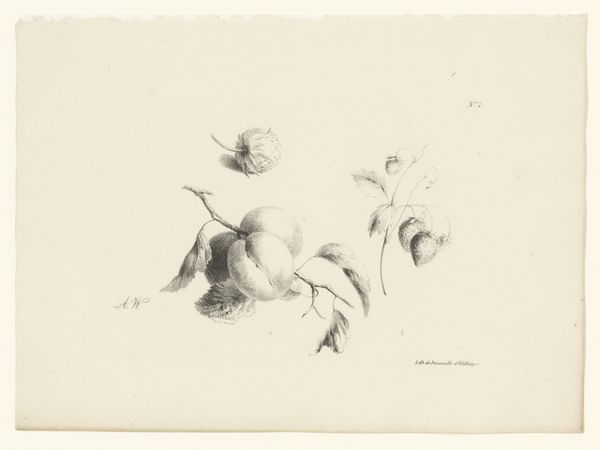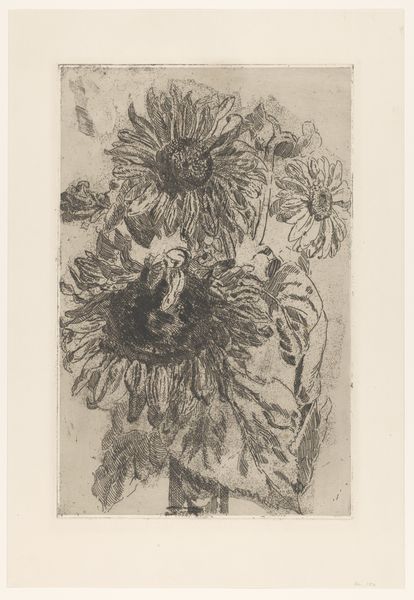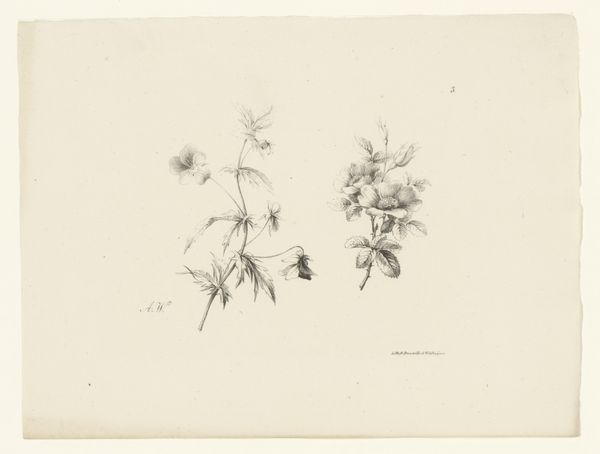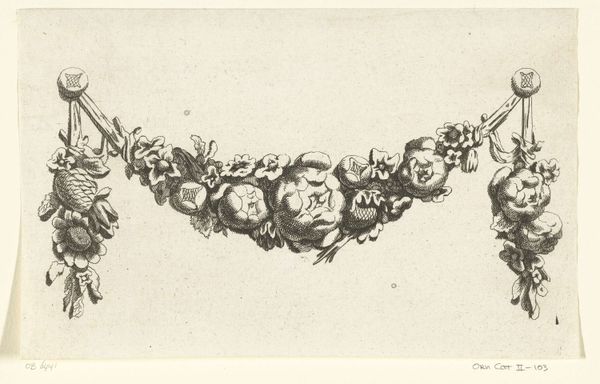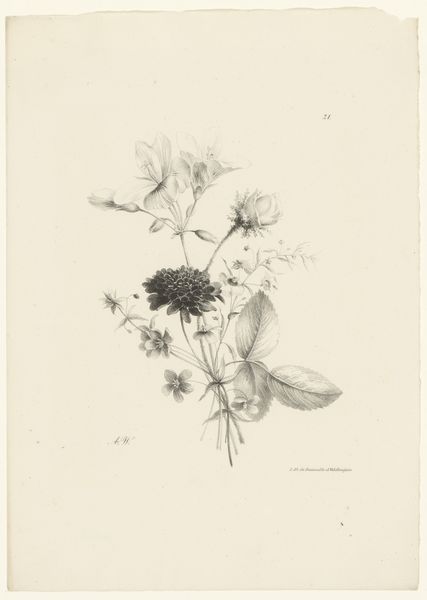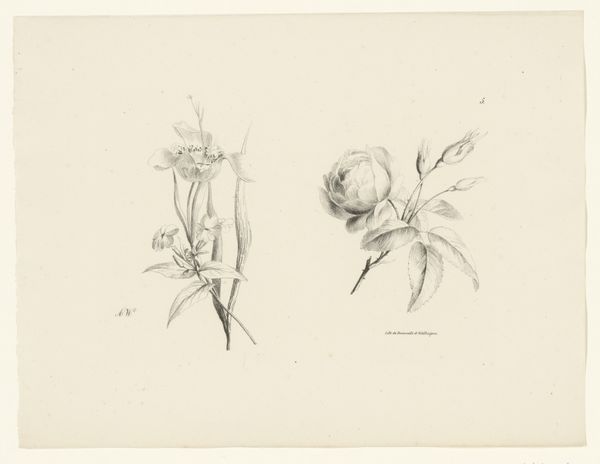
drawing, print, pencil
#
drawing
# print
#
pencil sketch
#
landscape
#
flower
#
pencil
Dimensions: 9 1/2 x 15 1/4 in. (24.1 x 38.7 cm)
Copyright: Public Domain
Curator: What a delicate rendering! This is “Studies of Flowers,” likely dating from sometime in the 1700s, artist unknown. It’s a drawing, a print, rendered in pencil, housed here at the Metropolitan Museum of Art. Editor: My initial impression is… ephemeral. Almost ghostly. The starkness of the pencil against the aged paper—it feels like catching a glimpse of something just on the verge of disappearing. Curator: Indeed. Flowers have held such a potent, albeit transient, symbolism throughout art history. They speak of love, of mourning, of the ephemeral nature of beauty itself. And even death. Editor: Exactly. Look at the craft; it looks almost as though the drawing happened on the same surface as the paper production, using minimal tools: flowers from a garden, locally-made paper and pencil lead to record each bloom before it’s time ran out. Curator: You know, even without knowing precisely which blossoms we’re seeing here, the imagery resonates. Each curve of petal, each stem, becomes a tiny memento mori, a subtle reminder of life's fleeting character. Editor: Right. The reproduction makes me want to handle the paper – how did its textures guide the original artist? Pencil and paper aren’t exactly costly but, at the time, they would have required resources like factories to be made and merchants for their trade and distribution. It reveals a whole supply chain tied to nature itself. Curator: These flower "studies" are incomplete sketches. One cluster appears abundant with flowers while others seem stark in its details. I think each flower sketch may hint at different temperaments, if we were to look closely at the symbolic role that flowers have long played in our conscious and subconscious. Editor: I agree. And these studies are just like material experiments that later become high-end finished designs. The making itself implies accessibility, like art is simply a task of carefully capturing the material world as it grows all around us. Curator: Perhaps a starting point to meditate and grasp the passing beauty of existence and its ephemerality. Editor: It really challenges our art historical distinction between craft and art by showcasing its labor roots.
Comments
No comments
Be the first to comment and join the conversation on the ultimate creative platform.
